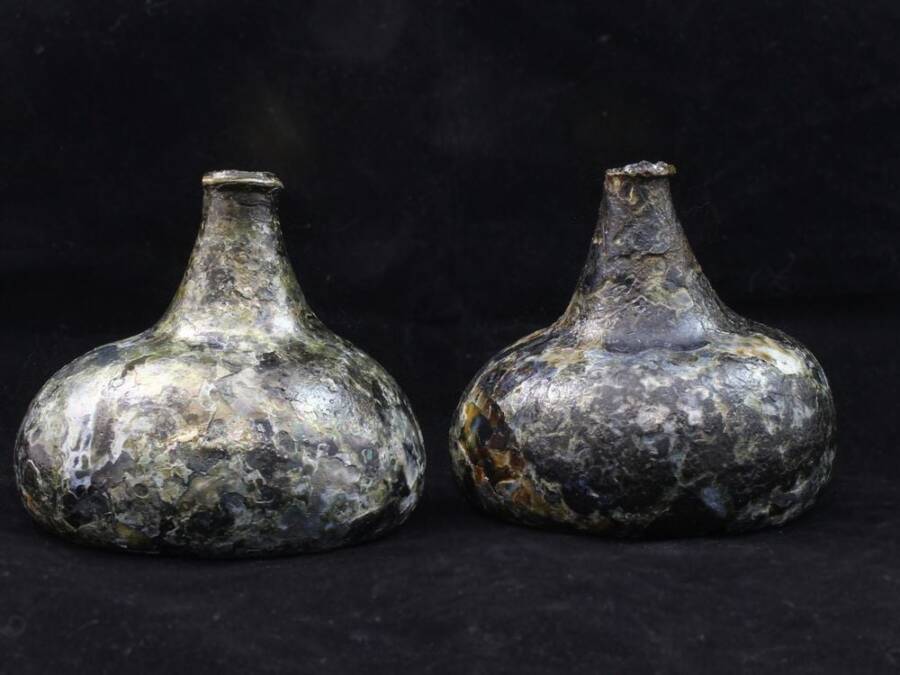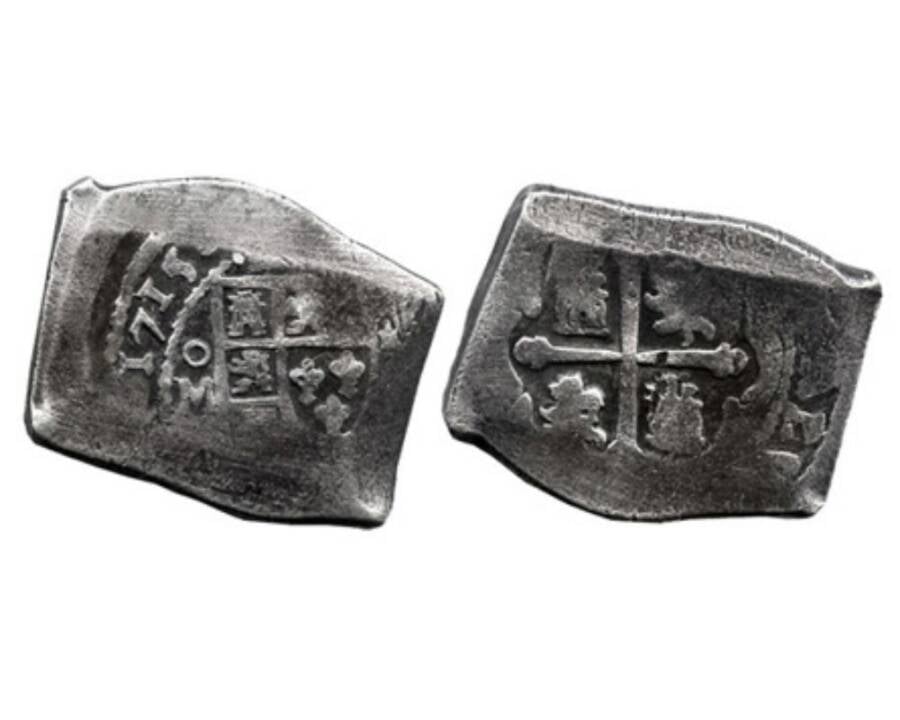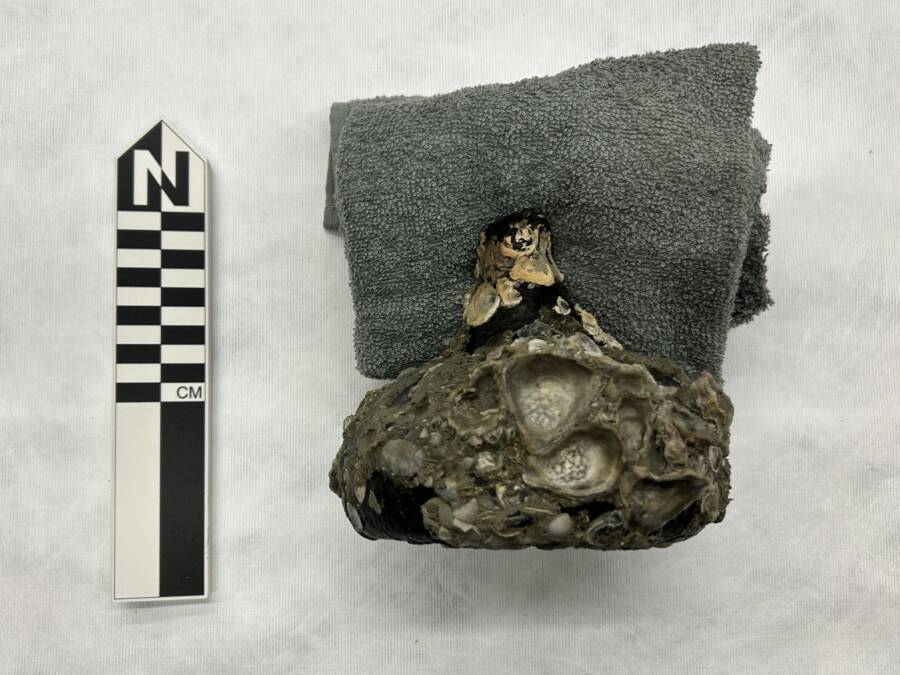The 300-year-old glass bottles were pulled from the wreckage of a fleet of ships that sank after sailing into a hurricane in July 1715.

Florida Division of Historical ResourcesThe rare “onion bottles,” which likely once held alcohol, were recovered from a Spanish shipwreck.
In July 1715, 11 Spanish ships sank in a hurricane off the Atlantic coast of Florida, and more than 300 years later, divers visited the site to pull artifacts from the wreckage. Now, the Florida Division of Historical Resources has announced the restoration of two rare “onion bottles” found on one of the doomed ships.
Despite spending three centuries underwater, the glass bottles were in good condition, though they were covered in sand, shells, and small marine life. After receiving a thorough cleaning and several coats of an acrylic resin used to conserve glass products, the relics are ready for display as a piece of Florida’s colonial history.
Divers Recover The Glass ‘Onion Bottles’ From A Shipwreck
Between 2021 and 2022, divers recovered a trove of artifacts from an 18th-century shipwreck off the Atlantic coast of Florida. The ship’s identity hasn’t been revealed, but it was part of the 1715 Treasure Fleet, a group of ships that ran into a hurricane while traveling back to Spain from Cuba in July 1715.

Augi Garcia for Daniel Frank Sedwick, LLC Auction/Wikimedia CommonsSilver coins recovered from the 1715 Treasure Fleet wreckage.
The fleet was just one of many that carried items like precious metals, gemstones, tobacco, and other valuable goods back to Europe from the New World. These particular ships were hauling silver coins called plata, so they’re sometimes referred to as the “Plate Fleet.” After unintentionally sailing into a hurricane, 11 of the ships in the fleet sank, killing an estimated 1,500 sailors. Pirates and researchers alike have been salvaging items from the wreckage in the centuries since the tragedy, but two glass bottles are among the rarest discoveries to date.
The glass “onion bottles,” named for their bulbous shape, were likely crafted by a skilled artisan in England and used to hold wine or liquor consumed by the ship’s crew. As Mark Ard, a spokesperson for Florida’s Department of State, told Fox News, “Onion bottles are free-blown using a pontile [metal rod]. Each one is unique, so there is variation in size, shape, and weight.”

Florida Division of Historical ResourcesThe onion bottles were found covered in sand, shells, and small ocean organisms.
Although the onion bottles had sat underwater for more than three centuries, they were still in surprisingly good condition. “These bottles are very fragile,” said Ard, “and for them to first survive the destruction of the ship and then being submerged underwater for over 300 years where they were subject to tidal forces is incredible.”
With a rare set of intact onion bottles on their hands, archaeologists set out to restore them to their former glory.
Restoring The Rare 18th-Century Artifacts
Experts spent months tediously restoring and conserving the glass bottles. They first removed the thick crust of sand, salt, and tiny sea creatures that had formed on the vessels over the centuries. “Peeling back the layers to these onions was surely a challenge!” the Florida Division of Historical Resources wrote in a Facebook post about the artifacts.

Florida Division of Historical ResourcesThe onion bottles following their restoration.
After such a long time in the ocean, the bottles had started undergoing a process called “delamination” in which the glass begins to flake from the surface. To prevent this, the glass was coated in several layers of an acrylic resin to stabilize it.
Now, the restored onion bottles have been entered into Florida’s Artifact Loan Program, which allows qualified academics, institutions, and museums around the world to borrow them for research and educational purposes. Because of this, researchers can continue to study the 1715 Treasure Fleet one artifact at a time, bringing us closer to understanding our shared history beneath the waves.
After reading about the glass onion bottles pulled from an 18th-century shipwreck, learn more about nine famous shipwrecks and the stories behind them. Then, go inside 15 of the most terrifying ghost ship stories.





